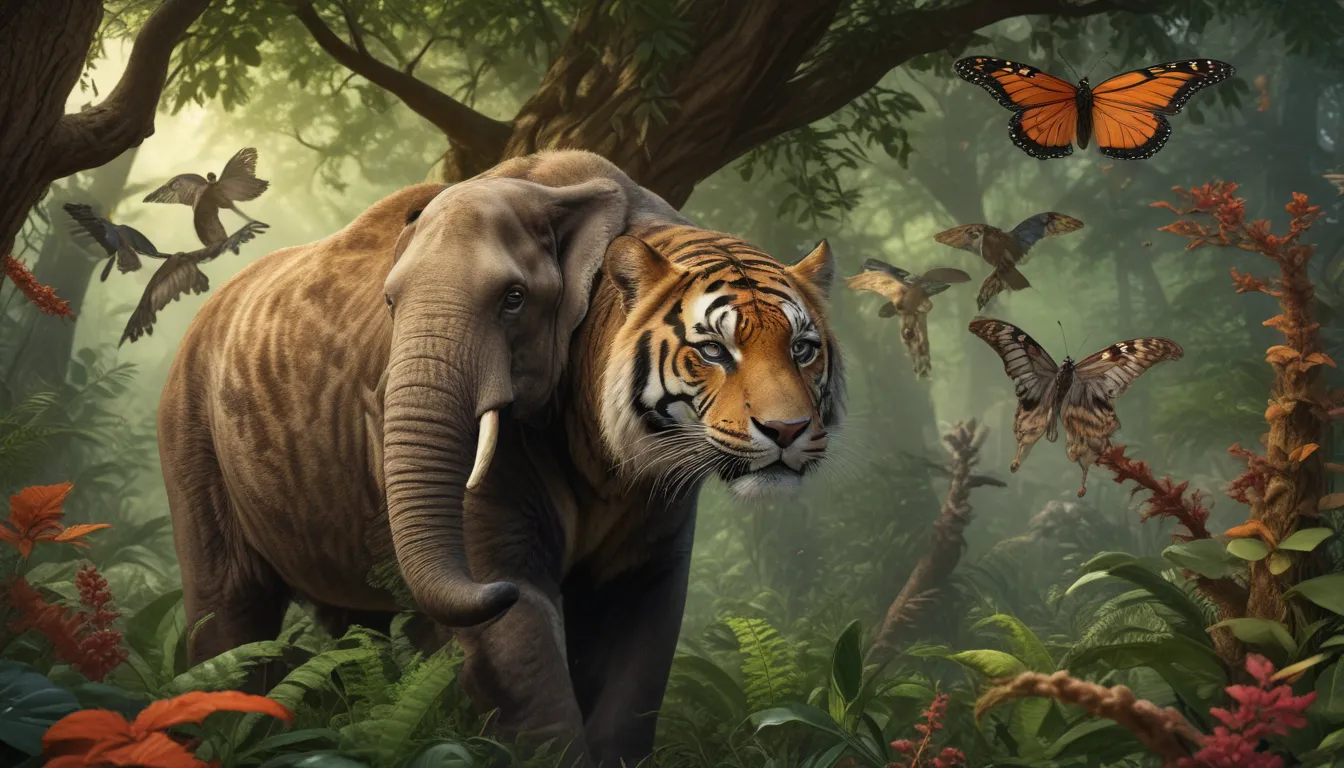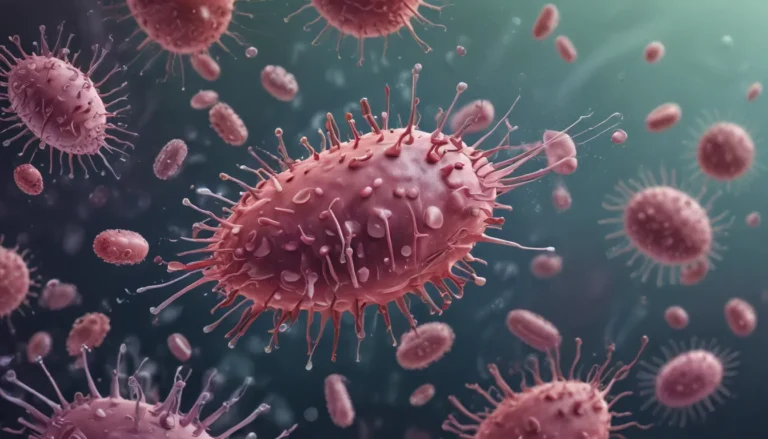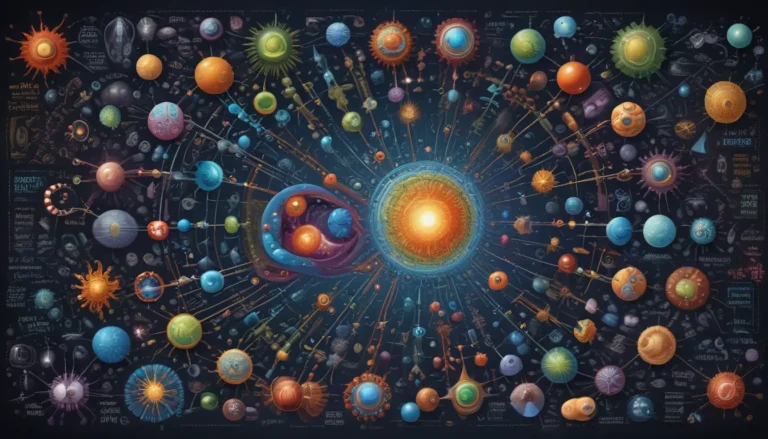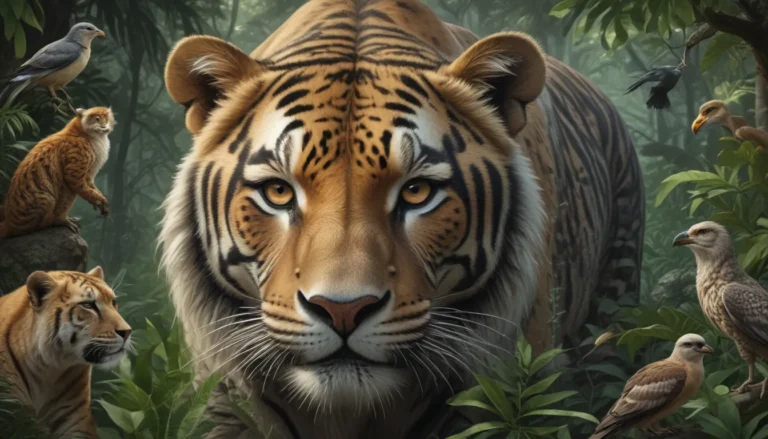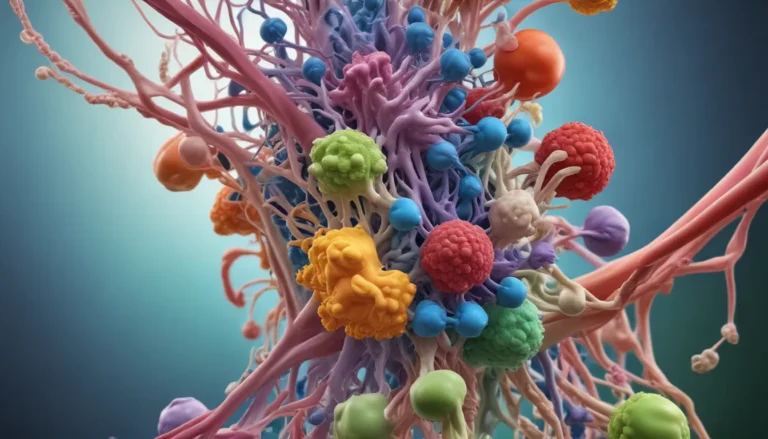A Note About Images: The images used in our articles are for illustration purposes only and may not exactly match the content. They are meant to engage readers, but the text should be relied upon for accurate information.
Conservation genetics stands as a beacon of hope for our planet’s rich biodiversity, merging the wonders of genetics with the imperative task of preserving and safeguarding species. By delving into the intricate realm of genetic variation within populations, conservation genetics equips scientists with the tools to devise effective conservation strategies that can potentially save endangered species from extinction. In this educational journey, we will unravel 15 extraordinary facts that underscore the pivotal role of conservation genetics in our efforts to protect the diversity of life on Earth.
Unveiling the Essence of Conservation Genetics
In the intricate tapestry of biology, conservation genetics emerges as a critical discipline dedicated to upholding the genetic diversity of plant and animal populations. By scrutinizing the genetic compositions of various species, scientists can formulate strategies that nurture conservation and sustainable management practices.
Identifying the Imperiled: Conservation Genetics at Work
One of the fundamental aspects of conservation genetics lies in its ability to pinpoint endangered species and distinct genetic populations within species. This identification is paramount in prioritizing conservation endeavors and implementing targeted plans to stave off the looming threat of extinction.
Harnessing the Power of DNA Analysis
Through the lens of DNA analysis, scientists can unravel the genetic intricacies within populations, paving the way for informed decisions in conservation initiatives. This analytical tool serves as a beacon of insight, shedding light on the genetic health and viability of species.
Unraveling the Genetic Legacy: Evolutionary Insights
Conservation genetics acts as a key that unlocks the doors to a species’ evolutionary past, unveiling migration patterns, adaptive traits, and genetic divergence. This knowledge serves as a cornerstone for crafting conservation strategies that resonate with a species’ unique evolutionary journey.
Nurturing Genetic Diversity in Captivity
In the realm of captive breeding programs, conservation genetics plays a pivotal role in ensuring genetic diversity while mitigating the perils of inbreeding. By cherry-picking individuals with diverse genetic profiles, these programs pave the way for the long-term survival of endangered species.
Battling the Invasion: Managing Invasive Species
The battleground against invasive species witnesses the strategic prowess of conservation genetics. By scrutinizing the genetic blueprint of these intruders, scientists can chart their origins, monitor their spread, and devise targeted interventions to curb their impact on native ecosystems.
Mitigating the Fragmentation Fallout
The perils of habitat fragmentation echo loud in the halls of conservation genetics. By dissecting the genetic structure of fragmented populations, conservation geneticists can unearth potential risks and craft conservation measures that safeguard genetic diversity and ecosystem stability.
The Art of Non-Invasive Sampling
Advancements in DNA analysis have paved the way for non-invasive sampling techniques, allowing conservation geneticists to extract genetic material from sources such as feces, hair, and feathers. These techniques offer a subtle touch in studying elusive or endangered species with minimal disturbance.
Fortifying Protected Areas with Genetic Insights
Analyzing the genetic makeup of species provides a critical compass for establishing effective protected areas that harbor genetically distinct populations. This meticulous planning ensures the preservation of biodiversity hotspots and fortifies the survival prospects of species.
Piloting Translocation Programs for Survival
Translocation maneuvers individuals or populations to new habitats, bolstering their chances of survival. Conservation genetics serves as a guiding light in determining source populations, gauging genetic compatibility, and monitoring the success of translocation efforts.
Unraveling Mysteries with Wildlife Forensic Investigations
The arsenal of genetic tools in conservation genetics has found a new frontier in wildlife forensic investigations. By leveraging genetic markers, conservation geneticists can trace the origins of seized specimens, provide crucial evidence, and aid in enforcing wildlife protection laws.
Spotlighting Keystone Species: Ecosystem Architects
Keystone species stand as pillars in ecosystem dynamics, steering the balance of ecological communities. Conservation genetics steps in to identify these pivotal species by examining their genetic uniqueness, ecological roles, and influence on community structure.
Harnessing Molecular Techniques for Genetic Insights
Conservation geneticists deploy an array of molecular techniques, ranging from DNA sequencing to polymerase chain reaction (PCR), to dissect and decipher genetic information. These tools offer a lens into population genetics, relatedness, and evolutionary history.
Embracing Genetic Rescue Efforts
Genetic rescue breathes new life into species by infusing genetic material from external populations to combat inbreeding depression. Conservation genetics orchestrates this delicate dance by selecting suitable donor populations and monitoring the genetic outcomes of such interventions.
Cultivating Sustainability through Genetic Wisdom
By peering into the genetic diversity of species, conservation genetics nourishes the seeds of long-term sustainability in the face of environmental upheavals. This wisdom steers informed decision-making and shields Earth’s biodiversity for generations to come.
Embracing the Tapestry of Conservation Genetics
In conclusion, conservation genetics serves as a beacon of hope in the quest to preserve biodiversity. By decoding genetic intricacies, scientists can unravel the intricate web that binds species, populations, and ecosystems together. This harmonious blend of biology, genetics, and ecology charts a course for effective conservation strategies and ensures the survival of the kaleidoscope of life on our planet.
FAQs: Navigating the Terrain of Conservation Genetics
- What is conservation genetics?
-
Conservation genetics amalgamates genetics, biology, and ecology to unravel species’ genetic diversity and formulate conservation strategies.
-
How does conservation genetics aid in preserving biodiversity?
-
Conservation genetics unveils crucial genetic factors influencing species’ survival, habitat fragmentation impacts, and the identification of genetically unique individuals necessitating special conservation measures.
-
Which techniques are integral to conservation genetics?
-
Techniques like DNA sequencing, genotyping, and genetic marker analysis are indispensable tools in studying population dynamics, migration patterns, and genetic diversity.
-
How does conservation genetics contribute to species management?
-
Conservation genetics informs decisions regarding breeding programs, reintroduction efforts, and genetic rescue endeavors, ensuring healthy, genetically diverse populations of endangered species.
-
Can conservation genetics be extended to plants?
- Absolutely! Conservation genetics extends its embrace to plant species as well, fostering ecosystem stability and safeguarding endangered botanical treasures.
Embark on a mesmerizing journey through the realm of conservation genetics, where each discovery unveils a new facet of Earth’s intricate biodiversity. As we delve deeper into the genetic tapestry of life, let us heed the call to protect and cherish the wondrous diversity that surrounds us. Together, let us champion the cause of conservation genetics and pave the way for a sustainable future brimming with life’s myriad wonders.
